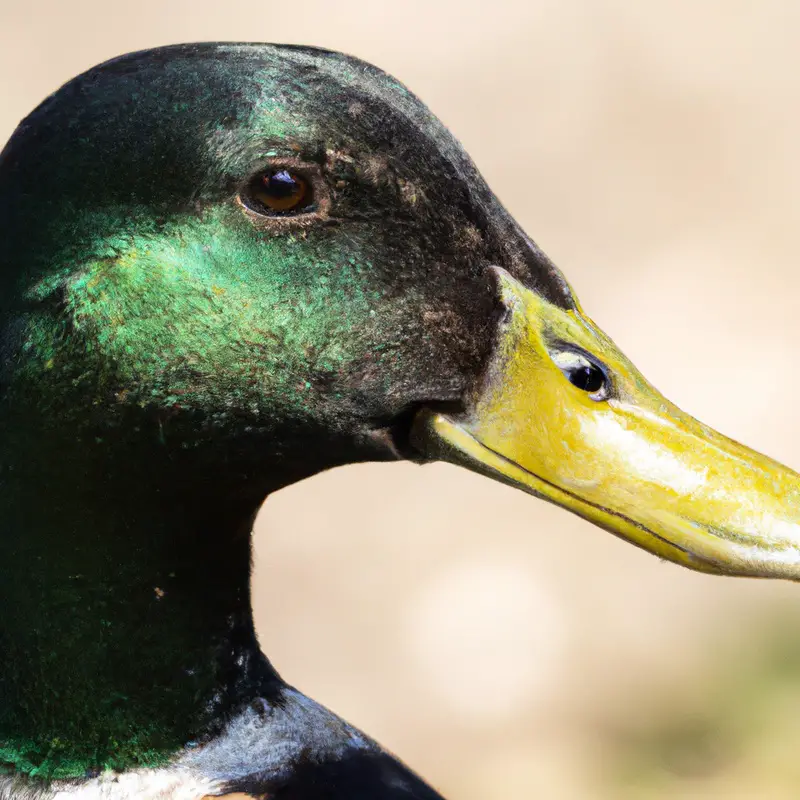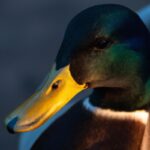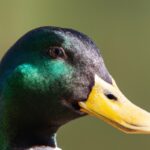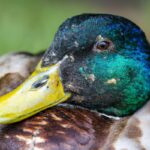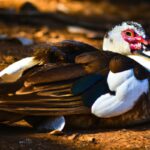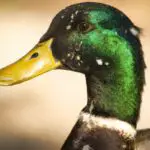Key Takeaways:
- Mallards are a popular game bird species for hunting in Colorado.
- Hunting mallards requires a thorough understanding of their behavior and habitat.
- Colorado offers diverse hunting opportunities for mallards, including public and private lands.
- Conservation efforts are important for maintaining sustainable mallard populations for future hunting seasons.
Are you a passionate hunter craving an exhilarating adventure? Look no further than Colorado, where vast wetlands and diverse wildlife make it a duck hunter’s paradise.
As an experienced hunter myself, I can assure you that Colorado offers exceptional opportunities for bagging mallards.
In this blog, I’ll be sharing valuable insights on hunting regulations, top spots, effective strategies, essential gear, ethical practices, safety precautions, and much more. Get ready to immerse yourself in the thrilling world of mallard hunting and discover why Colorado is a must-visit destination for any waterfowl enthusiast.
Let’s dive in!
Aspect | Mallard Hunting in Colorado |
|---|---|
Location | Colorado |
Legal Seasons | Fall and Winter |
Bags and Possession Limits | Limits vary based on specific regulations – check with Colorado Parks and Wildlife Department |
Hunting Methods | Decoys, duck calls, blinds, spot-and-stalk |
Firearms | Must adhere to Colorado state laws/regulations |
Licensing | Colorado hunting license and state waterfowl stamp required |
Important regulations |
|
Hunting regulations and requirements in Colorado
Overview of hunting seasons and bag limits for mallards
Hunting seasons and bag limits for mallards in Colorado vary depending on the type of hunting you are engaging in.
For the regular duck season, which typically begins in late September or early October, you can hunt mallards during the specified dates set by the Colorado Parks and Wildlife Department.
The bag limit for mallards during this season is usually 6 birds per day.
There is also an early teal season, which occurs in September, where you can hunt teal and other early migrating ducks.
During this season, the bag limit for mallards is often restricted to 2 birds per day.
It’s crucial to stay informed about any specific rules or restrictions associated with these seasons, as regulations may change from year to year.
Always check the current regulations provided by the Colorado Parks and Wildlife Department to ensure you are hunting within the legal limits.
Licensing and permit requirements
Licensing and permit requirements for hunting mallard in Colorado are straightforward. To hunt migratory game birds like mallards, you need to have a valid Colorado small game license.
Additionally, you must purchase a federal Migratory Bird Hunting and Conservation Stamp (Duck Stamp).
It’s essential to carry both documents with you while hunting. These requirements ensure that hunters contribute to conservation efforts and adhere to wildlife management regulations.
Remember, always review the current regulations to stay informed and compliant.
Happy hunting!
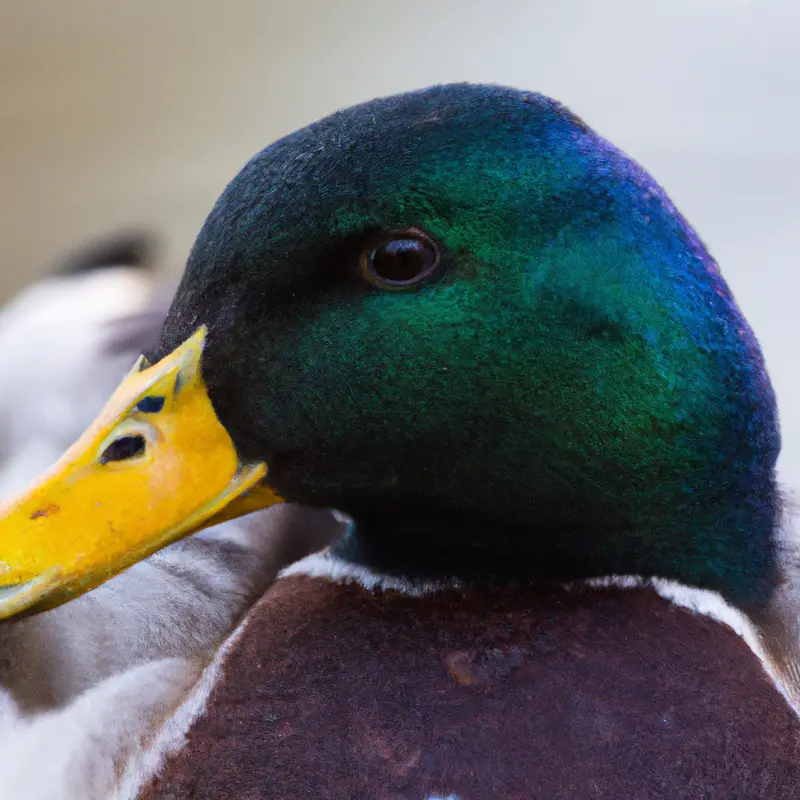
Firearms and safety regulations
When it comes to firearms and safety regulations for hunting in Colorado, there are some important guidelines you need to follow. These regulations are in place to ensure the safety of hunters and those around them.
Here are a few key points to remember:
- Colorado law requires all hunters to have a valid hunting license and carry it with them at all times while hunting.
- It is essential to follow specific restrictions on the use of firearms, such as no fully automatic weapons or explosive ammunition.
- Hunters must always be aware of their surroundings and make sure they have a clear line of sight before taking a shot.
- Proper storage and transport of firearms is crucial, including using safety locks and keeping the firearm unloaded while in a vehicle.
- Make sure to follow all season dates and bag limits, as well as any additional regulations in the area you plan to hunt.
By adhering to these firearms and safety regulations, you can enjoy a safe and responsible hunting experience in Colorado. Always remember to prioritize safety and respect the regulations put in place for the protection of everyone involved.
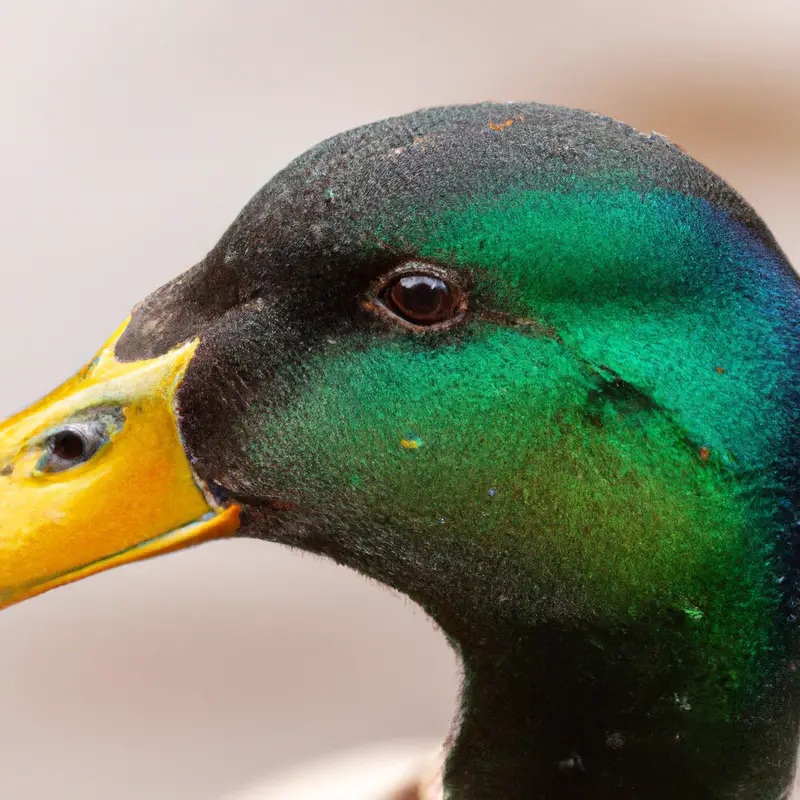
Best hunting spots in Colorado for mallards
Description of popular hunting areas
Colorado is home to several popular hunting areas for mallards.
One such area is the South Platte River, which provides ample opportunities for waterfowl hunting.
Another great spot is the Brush Hollow Reservoir, known for its diverse array of waterfowl.
Chatfield State Park is also a favored location due to its large lake and surrounding marshes.
Lastly, the Rocky Mountain Arsenal National Wildlife Refuge offers a unique hunting experience with its combination of wetlands and prairies.
Each of these areas provides a unique setting and abundant mallard hunting opportunities.
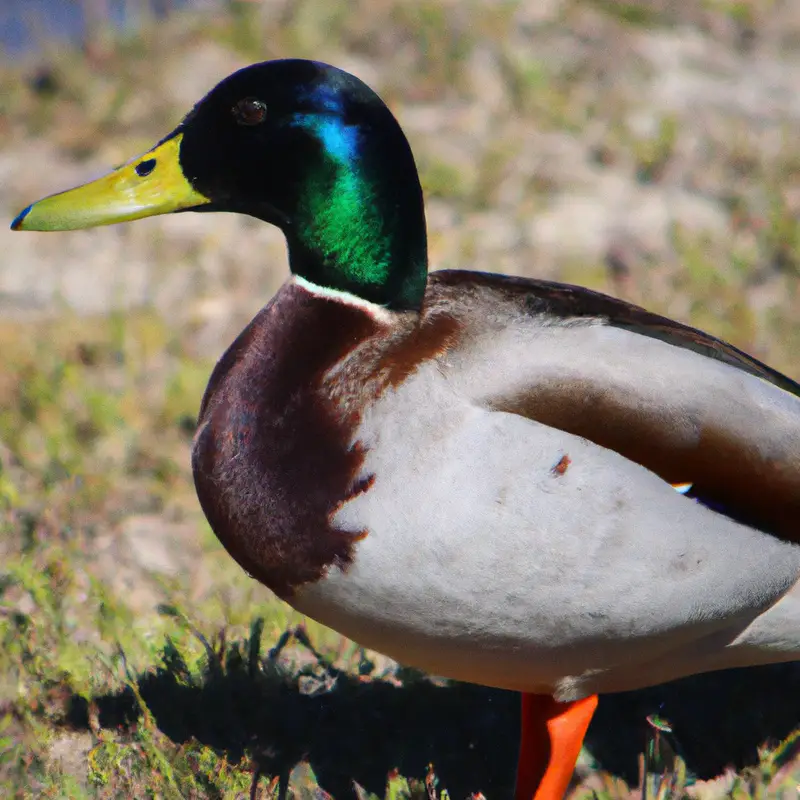
Factors to consider when choosing a hunting spot
When choosing a hunting spot, there are a few factors you should consider.
First, think about the type of game you want to target.
Different species require different habitats.
Next, consider the accessibility of the area.
Is it easy to reach and navigate?
Look for a spot with good cover and food sources nearby.
Additionally, consider the legal regulations for hunting in that area, including seasons and bag limits.
Finally, think about the level of hunting pressure in the area.
Too much activity can make it harder to find game.
By considering these factors, you can choose a hunting spot that increases your chances of success.
Tips for scouting and identifying prime hunting locations
When scouting for prime hunting locations, there are a few tips that can help you have a successful day in the field. First, research the area’s topography, water sources, and food availability for mallards.
Look for areas with proper cover and plenty of vegetation.
Second, scout during the early morning or late afternoon to observe the movement and behavior of mallards. Third, talk to local hunters or check with state wildlife agencies for information on popular hunting spots.
Finally, pay attention to weather conditions, as mallards prefer calm, windless days.
Happy hunting!
Strategies and techniques for hunting mallards in Colorado
Decoy setups and placement for attracting mallards
To attract mallards during hunting, it’s important to focus on your decoy setups and placement.
Start by using a combination of mallard hen and drake decoys to create a realistic spread.
Place the decoys close together in small groups, mimicking natural social behavior.
Make sure to vary the positions and angles of the decoys to create a natural-looking scene.
Consider adding motion to your spread, such as using spinning-wing decoys, to add realism and attract attention.
Additionally, be mindful of wind direction and adjust your spread accordingly for a successful hunt.
Calling techniques and tips for mimicking mallard sounds
To effectively mimic mallard sounds while hunting, there are a few calling techniques and tips you can use.
First, start with the basic mallard quack, which is a low, raspy call.
Add some variation in pitch and volume to make it sound more natural.
Another important call to master is the feeding chuckle, which is a series of fast, short quacks.
Additionally, learn the hail call, a loud and long series of high-pitched quacks to grab the attention of distant ducks.
Remember, practice makes perfect, so try recording and listening to your calls to improve your technique.
Camouflage and concealment techniques
Camouflage and concealment techniques are essential for successful mallard hunting in Colorado. It’s crucial to blend in with the surroundings to avoid detection by ducks.
Here are some effective techniques to consider:
- Choose the right camouflage pattern for the hunting area, matching the vegetation and environment.
- Use natural materials like branches, grass, or reeds to build a duck blind. Make sure it blends well with the surroundings.
- Avoid shiny or reflective surfaces on your gear and equipment. These can catch the light and give away your position.
- Stay still and keep your movements to a minimum. Ducks are quick to spot any sudden movements.
- Use face paint or a mask to camouflage your face and minimize the chances of being seen.
- Opt for natural calling techniques rather than electronic calls. This will help you avoid unnecessary attention.
By employing these camouflage and concealment techniques, you’ll increase your chances of a successful mallard hunting experience in Colorado.
Essential gear and equipment for hunting mallards in Colorado
Choosing the right shotgun and ammunition
Choosing the right shotgun and ammunition is essential for a successful mallard hunting trip in Colorado.
When it comes to shotguns, consider the gauge that best suits your needs.
A 12-gauge shotgun is versatile and popular, while a 20-gauge offers reduced recoil and lighter weight.
For ammunition, opt for a size 2 or 4 steel shot to effectively take down mallards.
Avoid using lead shot, as it’s banned for waterfowl hunting.
Remember to check with local regulations for any restrictions on shotgun and ammunition types.
Always prioritize safety and follow ethical hunting practices.
Clothing and gear for varying weather conditions
When it comes to hunting mallards in varying weather conditions, it’s important to have the right clothing and gear. Here are some essentials:
- Base layers: Start with moisture-wicking base layers to keep you dry and comfortable.
- Insulation: Layer up with a good-quality insulating jacket or vest to keep you warm when it’s cold.
- Waterproof outerwear: Invest in a waterproof and breathable jacket and pants to protect you from rain and snow.
- Boots: Choose waterproof and insulated boots with good traction to keep your feet warm and dry.
- Gloves and hats: Don’t forget to pack gloves and a hat to protect your hands and head from the cold.
- Optics: A good pair of binoculars will help you spot mallards from a distance.
- Decoys and calls: Bring along mallard decoys and calls to attract ducks to your hunting area.
Remember to check the weather forecast before your hunt and dress accordingly. Dressing in layers allows you to adjust your clothing based on the temperature.
Stay comfortable and focused so you can have a successful mallard hunt.
Decoys, calls, and other necessary equipment
When it comes to hunting mallards in Colorado, having the right gear and equipment is essential. Decoys are a must-have, as they attract the ducks to your hunting area.
Invest in both hen and drake decoys for a realistic spread.
Calls are another essential tool to mimic mallard sounds and lure the ducks closer. Look for a versatile call that can produce a variety of sounds.
Other necessary equipment includes waders or hip boots to stay dry in the marsh, a camouflaged blind or boat, and a reliable shotgun with non-toxic ammunition.
Don’t forget to have proper licenses and permits before heading out to hunt.
Hunting ethics and conservation practices
Importance of following ethical hunting practices
Following ethical hunting practices is of utmost importance for several reasons.
Firstly, it ensures the sustainability of wildlife populations.
By practicing ethical hunting, you contribute to maintaining a healthy balance in the ecosystem.
Secondly, it promotes respect for the animals being hunted.
Ethical hunters prioritize quick and humane kills, minimizing suffering.
Moreover, it helps to maintain the reputation of the hunting community.
Hunting ethically displays a responsible and ethical approach to wildlife conservation.
Lastly, it enhances safety for both hunters and other individuals in the vicinity.
Adhering to ethical practices reduces the risk of accidents and promotes responsible behavior in the hunting community.
Respecting wildlife and their habitats
Respecting wildlife and their habitats is vital for the conservation of our natural resources. It involves understanding and appreciating the needs of animals and the importance of preserving their habitats.
By being mindful of our actions, we can minimize disturbances to wildlife and ensure their survival.
This includes avoiding littering, staying on designated trails, and refraining from approaching or feeding wild animals. Additionally, supporting conservation organizations and participating in responsible outdoor activities can help protect and maintain their habitats for future generations to enjoy.
Conservation efforts for preserving mallard populations
Conservation efforts play a vital role in preserving mallard populations.
To protect these iconic ducks, local and national organizations focus on habitat preservation, nest box programs, and hunting regulations.
By protecting and improving wetlands, we provide essential breeding, molting, and nesting habitats for mallards.
Nest box programs create additional breeding sites, increasing the duck’s reproductive success.
Responsible hunting regulations ensure sustainable harvests and give mallard populations a chance to thrive.
Through these collective efforts, we can safeguard mallard populations for future generations to enjoy.
Safety precautions and tips for hunting mallards in Colorado
Firearm safety guidelines
Firearm safety is of utmost importance when hunting.
Here are some guidelines to keep in mind:
- Always treat every firearm as if it is loaded, even if you believe it is not.
- Keep your finger off the trigger and outside the trigger guard until you are ready to shoot.
- Be aware of your target and what lies beyond it. Never shoot at anything you cannot positively identify.
- Be mindful of your surroundings and ensure that you have a safe shooting direction.
- Store your firearms securely and out of reach of unauthorized individuals, particularly children.
Remember, following these guidelines will help ensure a safe and enjoyable hunting experience.
Recognizing and avoiding hunting hazards
When you’re out hunting, it’s essential to be aware of potential hazards and how to avoid them. Here are some important tips for recognizing and avoiding hunting hazards:
- Be mindful of your surroundings: Stay alert and scan your surroundings regularly to identify any potential dangers. This includes knowing the location of fellow hunters to prevent accidental shootings.
- Wear proper safety gear: Always wear an orange hunting vest or hat to improve visibility and reduce the risk of being mistaken for game by other hunters.
- Identify your target: Before taking any shot, positively identify your target. Make sure you have a clear line of sight and can confirm that it is a legal and safe game animal.
- Respect firearm safety rules: Follow all firearm safety rules, such as keeping your finger off the trigger until ready to shoot and keeping the muzzle pointed in a safe direction at all times.
- Follow state hunting regulations: Familiarize yourself with the specific hunting regulations in your state, including hunting times, bag limits, and any restricted areas. Ignoring these regulations can lead to fines or accidents.
- Communicate with fellow hunters: Establish clear communication signals and use them consistently to ensure everyone is on the same page. This helps prevent confusion and potential accidents.
- Consider weather conditions: Be cautious of inclement weather conditions that may impact your safety, such as fog, heavy rain, or strong winds. Adjust your plans accordingly and prioritize your well-being.
By being aware of these hunting hazards and taking the necessary precautions, you can have a safe and successful hunting experience. Remember, safety should always be your top priority.
Basic first aid and emergency preparedness
When you’re out hunting mallards in Colorado, it’s important to be prepared for any emergencies that may arise.
Basic first aid skills and emergency preparedness can make a big difference in keeping yourself and others safe.
Here are a few tips to keep in mind:
- Carry a first aid kit: Make sure your hunting gear includes a well-stocked first aid kit. It should contain bandages, antiseptic ointment, pain relievers, and any necessary prescription medications.
- Know basic first aid: Take the time to learn some basic first aid skills, such as CPR and how to treat common injuries like cuts, sprains, and burns. Knowing what to do in an emergency can save lives.
- Plan for emergencies: Before you head out, create an emergency plan. Share your plan with a trusted friend or family member who isn’t hunting with you. Make sure your plan includes information on how to get help if needed.
- Stay aware of your surroundings: Pay attention to your surroundings and watch for potential hazards. Uneven terrain, slippery surfaces, or dangerous wildlife can all pose risks. Being aware of your surroundings can help you avoid potential accidents.
- Stay hydrated and rest as needed: Hunting can be physically demanding, so it’s important to take care of yourself. Stay hydrated by drinking plenty of water, and take breaks as needed. Pushing yourself too hard can lead to exhaustion or injuries.
Remember, accidents can happen even when you’re being cautious.
By being prepared and having some basic first aid knowledge, you’ll be better equipped to handle any emergencies that may occur during your hunting trip.
Frequently Asked Questions (FAQ)
Can I hunt mallards in Colorado without a license?
No, you cannot hunt mallards in Colorado without a license.
In Colorado, a hunting license is required for all types of hunting, including waterfowl hunting.
So, if you’re planning to hunt mallards in Colorado, make sure to obtain the necessary hunting license beforehand.
It’s important to comply with the state’s regulations to ensure a legal and responsible hunting experience.
What is the bag limit for hunting mallards?
The bag limit for hunting mallards in Colorado is seven birds per day, with no more than two of those being hens. This limit is set by the Colorado Parks and Wildlife Department to help maintain a healthy population of mallards in the state.
It’s important to note that bag limits can vary from year to year, so it’s always a good idea to check with the local wildlife regulations before heading out on your hunt.
Happy hunting!
Are there any restrictions on using electronic calls for duck hunting in Colorado?
Using electronic calls for duck hunting in Colorado is subject to restrictions. According to the Colorado Parks and Wildlife, electronic calls are allowed for hunting all species of ducks except for the mallard.
This means that if you are specifically targeting mallards, you are not allowed to use electronic calls.
It’s important to familiarize yourself with the regulations and follow them to ensure a legal and ethical hunting experience.
Final Verdict
Hunting mallards in Colorado provides a thrilling experience for both seasoned hunters and beginners alike. With a wealth of hunting regulations and requirements in place, such as licensing and safety regulations, Colorado ensures responsible and sustainable hunting practices.
By choosing the right hunting spot, implementing effective strategies, and equipping oneself with the necessary gear, hunters can increase their chances of a successful hunt.
It is crucial to prioritize ethical hunting practices and conservation efforts to preserve the mallard population and their habitats. Always prioritize safety by following firearm safety guidelines and being prepared for emergencies.
Overall, hunting mallards in Colorado offers a rewarding and memorable experience for those who appreciate the beauty of nature and the excitement of the hunt.
